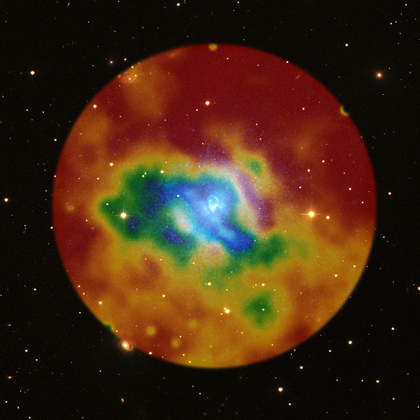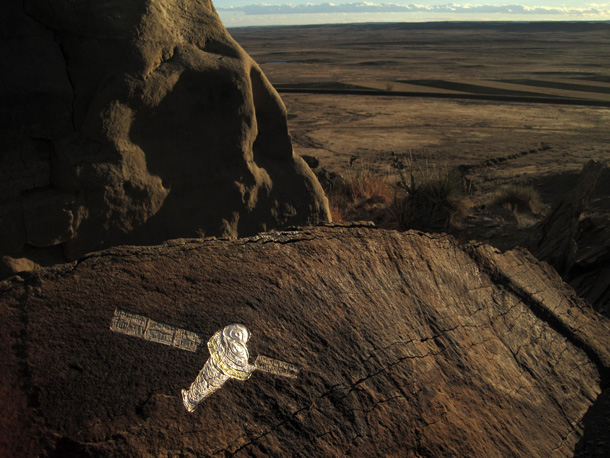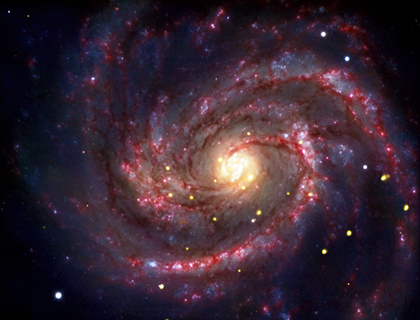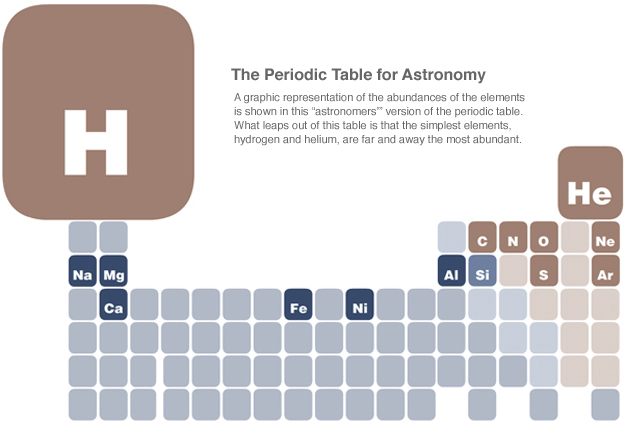Submitted by chandra on Wed, 2010-12-08 10:54

This composite image shows an intergalactic "weather map" around the elliptical galaxy NGC 5813, the dominant central galaxy in a galaxy group located about 105 million light years away from Earth. Just like a weather map for a local forecast on Earth, the colored circle depicts variations in temperature across a region. This particular map presents the range of temperature in a region of space as observed by NASA's Chandra X-ray Observatory, with the hotter temperatures shown in red and decreasingly cooler temperatures shown in orange, yellow, green, and blue. The numbers displayed when rolling your mouse over the image give the gas temperature in millions of degrees.
Submitted by chandra on Fri, 2010-12-03 10:09
Jonathan Taylor, Senior Lecturer in Creative Writing at De Montfort University in the UK, wrote two poems called 'History Lesson' and 'Black Hole in B-Flat,' both inspired by Chandra discoveries, and featured on Chandra's blog. Because of the success of these poems, Chandra and De Montfort University subsequently ran a competition for Creative Writing undergraduate students, in which they were invited to submit poems inspired by one of Chandra's press releases. The competition aimed to uncover the poetry inherent in the kind of scientific discovery undertaken by Chandra, and the four winning entries certainly succeeded in doing precisely that.
Here are the third and fourth placegetters in the competition. The first and second placegetters will be included in a future blog posting.
Submitted by chandra on Tue, 2010-11-30 17:01

There have been many odes and tributes to Chandra over its 11-year run so far, but here's one that we certainly never expected: Chandra immortalized in petroglyphs. The artist, Kevin Sudeith, carved an image of the spacecraft into rocks alongside a road in Montana. While we hope that Chandra lasts a very long time, it is certain that this tribute to the telescope will last even longer. So thanks to Kevin for his excellent art and his devoted interest in Chandra.
-Megan Watzke, CXC
Submitted by chandra on Mon, 2010-11-15 11:00
This composite image shows a supernova within the galaxy M100 that may contain the youngest known black hole in our cosmic neighborhood. In this image, Chandra's X-rays are colored gold, while optical data from ESO's Very Large Telescope are shown in yellow-white and blue, and infrared data from Spitzer are red. The location of the supernova, known as SN 1979C, is labeled (roll your mouse over the image above).

Submitted by chandra on Mon, 2010-11-08 11:11

Today, Google is marking the 115th anniversary of the discovery of X-rays by William Roentgen, a German physicist. Here at the Chandra blog, we are not sure if this exact date is the most important one, but we do know that he made his discovery some time during 1895. And, hey, we are always in the mood for a little celebration of all things high-energy.
Submitted by chandra on Thu, 2010-11-04 15:00
The last time I wrote a blog entry on the Sun was about two months ago. I noted that although the Sun had an outburst in August it was still fairly quiet. It remains fairly quite, although the sunspot numbers have been steadily creeping up for the last few months and there were four weak "C-class" flares last week. The observed rates are still only about two-thirds of the predicted values.
Submitted by chandra on Tue, 2010-11-02 09:40
The year 2011 has been proclaimed (by the United Nations and a host of other proclaimers) to be the International Year of Chemistry, a worldwide celebration of the achievements of chemistry and its contributions to the well-being of humankind.

Submitted by chandra on Wed, 2010-10-27 11:08
This past weekend, the Chandra team had a great time at the USA Science & Engineering Festival. From nearly the start of the day on Saturday through the end of Sunday, there was a steady stream of people stopping by. Those who did attend had to deal with street closures from road races, as well the regular DC activity around the National Mall. Everyone was rewarded, however, with some fabulous autumn weather – sunny and dry.
Submitted by chandra on Tue, 2010-10-26 11:15
NASA's Chandra X-ray Observatory has observed an unusual galaxy cluster that contains a bright core of relatively cool gas surrounding a quasar called 3C 186. This is the most distant object yet observed, and could provide insight into the triggering of quasars and the growth of galaxy clusters.
Submitted by chandra on Tue, 2010-10-26 09:13
In its relatively short 50 year history, the field of X-ray astronomy has shed a whole new light on our view of the universe, and has seen a dizzying rate of technological advancement. Prior to the 1960's, only the Sun was a known source of high energy radiation in X-rays and gamma-rays. These wavelengths of light are absorbed by Earth's atmosphere, so X-ray astronomy depended on advancements in rocketry and space science to be fully explored.
Pages